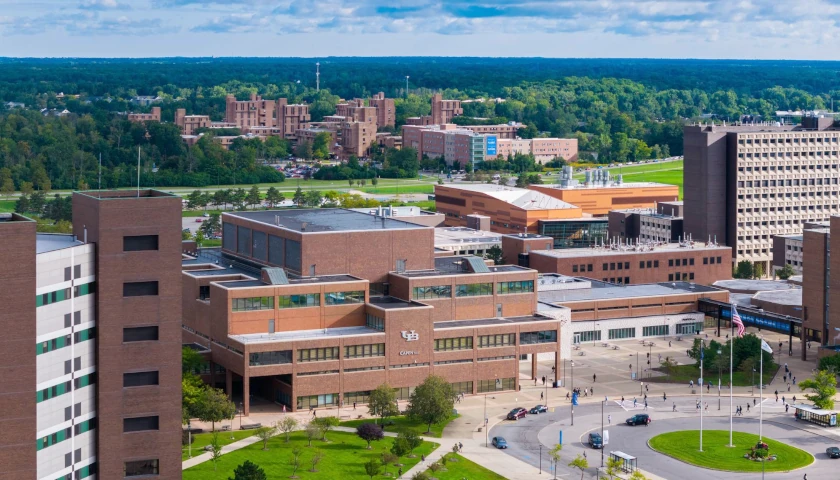Philadelphia-based Education Law Center told the city’s School Reform Commission that immigrant students and English Language Learner students (EL), need expanded programming, “improved cultural competency” for teachers, more support for the parents of these students and greater access to vocational training programs. According to the Law Center, test results show that this group of students are failing to progress in their education:
Test results indicate that immigrant students and ELs are among the most educationally at-risk of all student groups. For instance, 44 percent of EL students scored below basic in 2015-16 in standardized math and reading tests, while only 19 percent of non-EL students were in that category.
The Law Center advocates statewide “fighting for fair school funding” and “equal access” to education services and programs.
In 2016, the ELC with help from the ACLU of Pennsylvania and lawyers from a high-priced private law firm, sued the Lancaster School District on behalf of six high school- age refugee students, objecting to their placement at the privately run Phoenix School. Officials with the school district cited Phoenix School’s “special acceleration program”as the reason the refugee students were placed there instead of the district’s regular high school:
A special ‘acceleration program’ at Phoenix was created for under-credited students, both refugee and non-refugee, which gives them the opportunity to earn credits toward a high school diploma by the age of 21, Rau said.
At Phoenix, the students receive various services including remedial services, English classes for Second Language Learners, after school programs, job and computer skills as well as mentoring services, Rau added.
The Federal courts ruled in favor of the students and ultimately required the school district to automatically assign all arriving “older” immigrant students “with little or no English proficiency, to the specially designed Newcomer Program at the main high school.”
The significance of this legal win was not lost on the plaintiffs’ lawyers who see the court’s decision valuable in asserting demands by non-citizen students:
‘This case is more important now than ever. It affirms the right of immigrant and refugee students to a meaningful education that overcomes language barriers.’ said Maura McInerney, senior staff attorney of the Education Law Center and one of the lawyers for the students. ‘The decision sends a clear and unequivocal message to all public schools that they have a duty to provide sound and effective English language services. Many immigrant students, particularly those newly arrived in the U.S. with limited prior education have unique and significant language needs that must be proactively addressed. They cannot languish in classrooms where they cannot access the curriculum.’
According to a 2015 report from the state’s Basic Education Funding Commission, 16% of the Lancaster School District student population receive ELL services at an annual cost of $8 million.
The same report provides limited and slightly outdated data regarding the state’s total ELL population:
According to the PA Department of Education, approximately 47,567 students speaking 229 languages are identified as English Language Learners. This figure represents nearly 2.7% of the total public school enrollment for the 2013-2014 school year. Since 2000, the number of ELLs students, sometimes referred to as students with Limited English Proficiency (LEP), has increased by 67%.
The report notes that most ELL students require between four to seven years of services and local school districts bear a significant part of the cost.
The same report ranked the Reading School District second among school districts with highest concentration of ELLs at 18.18%.
According to the Pennsylvania Department of Education spokesman Nicole Reigelman, the Basic Education Funding formula used by the state to fund public school education, “includes a weighted-student addition to ADM [Average daily membership is the number of students a school district is financially responsible for], based on the number of ELL students in a school district multiplied by .06.”
Reigelman also suggested that school districts could use Title III federal funds but had not data on this nor could Reigelman provide an answer to what happens if a local school district cannot fund the required ELL services.
The Tennessee Star asked Reigelman specifically to provide the state’s ELL appropriation for years 2014 through 2018 or provide information about how these expenditures could be discovered. Her response should concern Pennsylvania taxpayers:
These costs are not reported on the Annual Financial Report. It’s possible that school districts track these costs but they are not reportable to the PDE [PA Department of Education].
No response was received to The Star’s question in response – “If I’m understanding your answers, the state really has no idea how much money it spends annually on ELL services with the exception I guess of the separate ELL add-on. Are you able to provide the amount of the ELL add-on for 2014 through 2018?”
According to the advocacy group The Campaign for Fair Education Funding PA (FEF), many of their recommendations were incorporated by the fair education formula supported by Governor Wolf and the General Assembly and then adopted by the bipartisan Basic Education Funding Commission. The funding formula accounts for the number of ELLS in a school district.
FEF’s 2015-2016 school year data for the Reading School District (RSD) shows that the district’s largest demographic are Hispanic students at 83% as compared to the state average of 10%, black students 9% and white students at 6%. Of the total 18,348 RSD student enrollment, 19% receive ELL services as compared to the state average of 3%, and 100% of the RSD students are categorized as economically disadvantaged versus the state’s 43% average.
According to the Soros-funded Migration Policy Institute compilation of data from the 2014 American Community Survey which is the latest available, 137,000 illegal aliens live in Pennsylvania 36,000 of whom are from Mexico followed by 9,000 from India, 8,000 from Guatemala, 7,000 from China and 6,000 from the Dominican Republic.
A 2016 ranking using Migration Policy Institute data of “Unauthorized Immigrant Population Profiles,” put Pennsylvania as having the 16th highest population of illegal aliens in the country.
The Pennsylvania Budget and Policy Center which is pushing for more education spending, says a recent poll “shows Pennsylvanians overwhelmingly support additional investment in K-12 education.”




